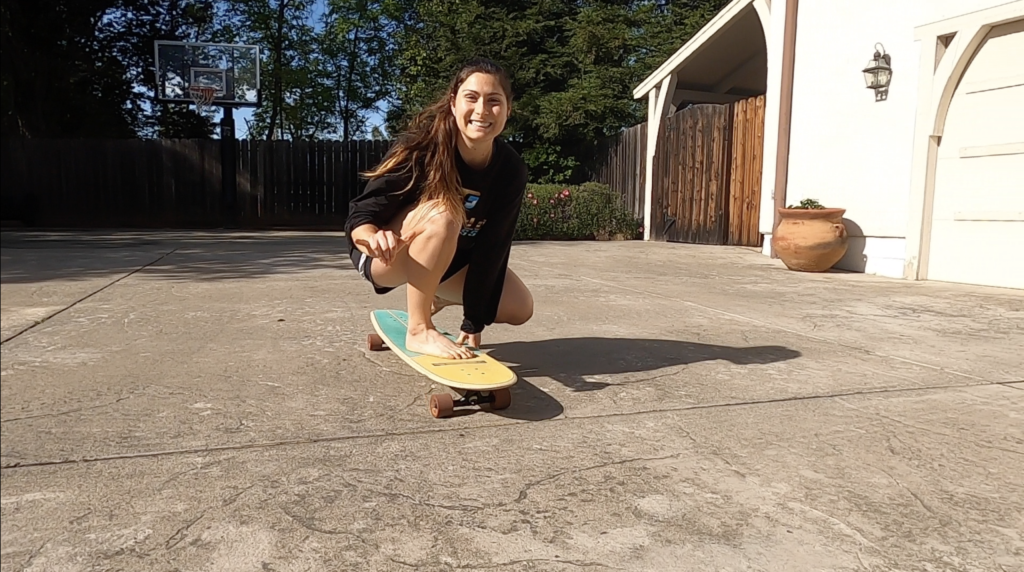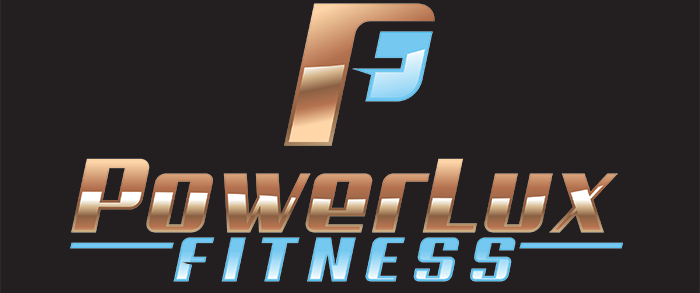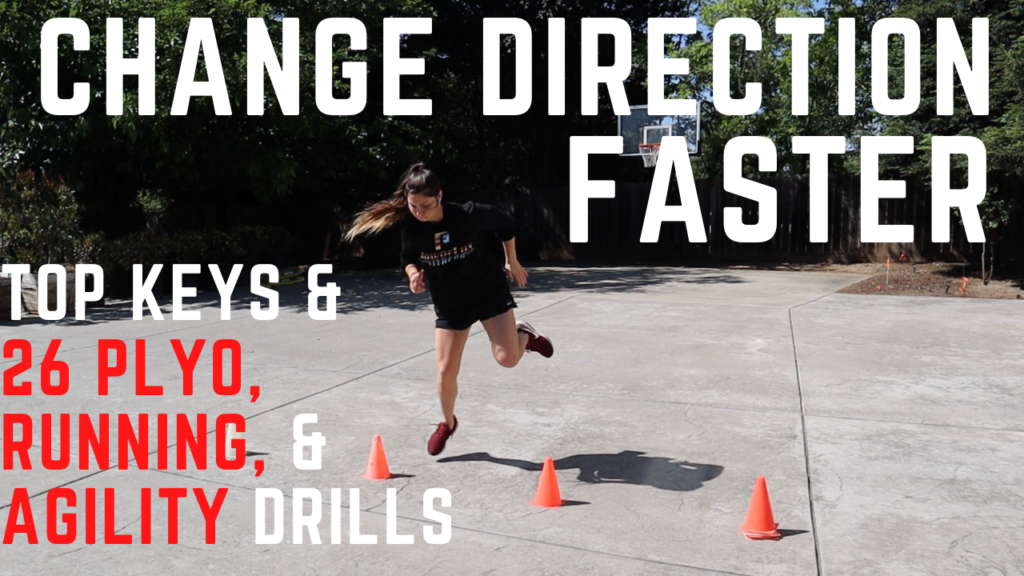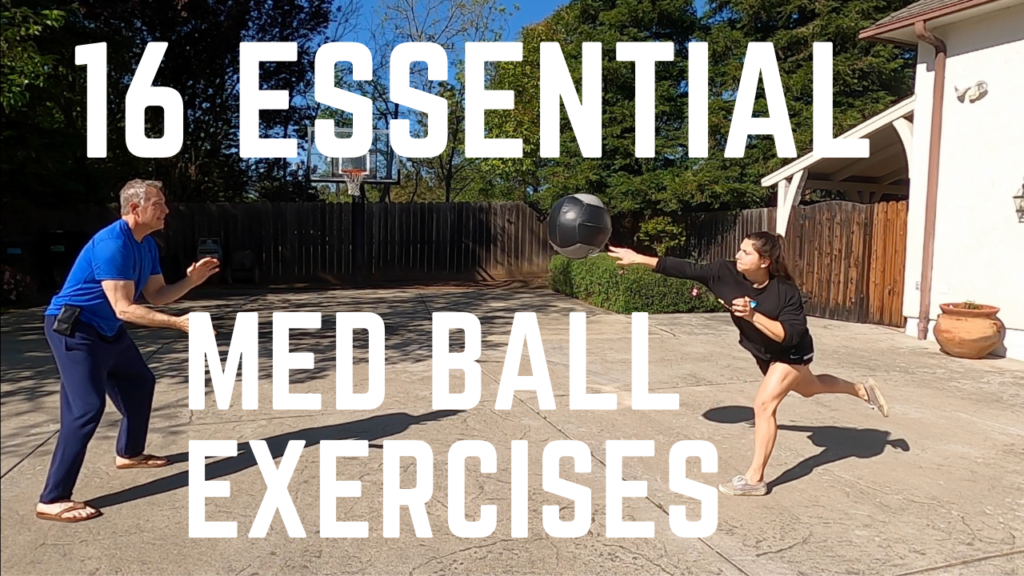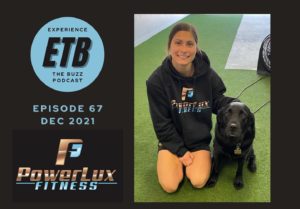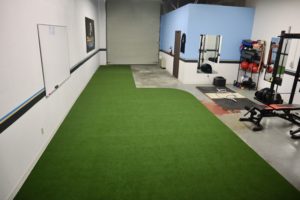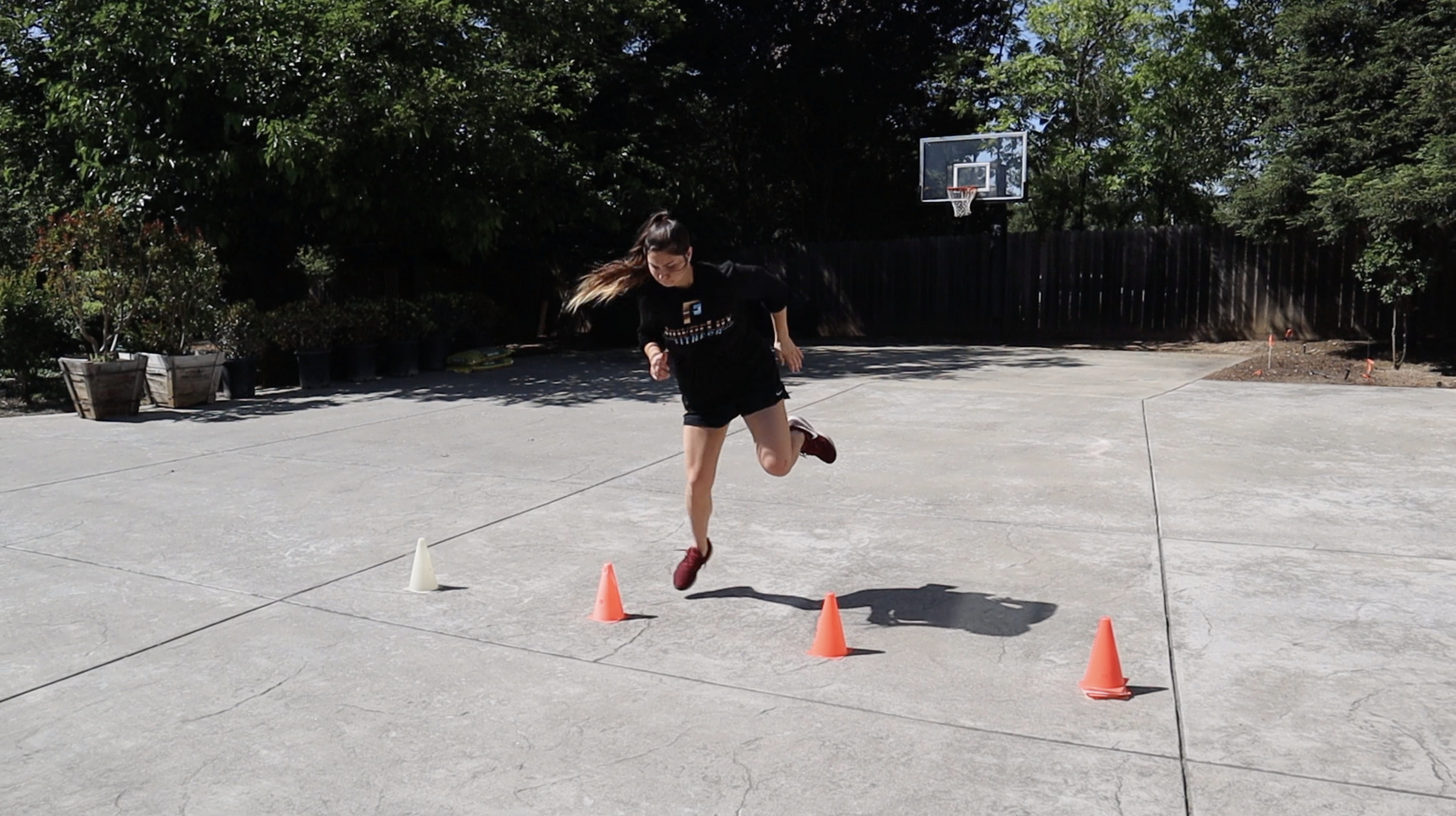
Click here or on the image above to check out our YouTube Video on Change of Direction! Plus you’ll get 26 plyometric and running drills from a professional level trainer that you can do anywhere!
More often than not, when you hear “change of direction” training, you immediately think of sports performance training. I mean, who wouldn’t think that, right? Athletes are the only people in the world who need to change direction fast and efficiently anyways…
WRONG!! If you think that you don’t ever change direction in a day, then I’d love to see how you live. Although you might not have to make the sharpest cuts in the world like athletes, it’s still imperative to train the musculature for when you are making hard turns or changing direction quickly.
Now, for those of you who still play sports or are involved in a lot of activity, change of direction is even more important for you to train. I know there’s a lot of people out there who play pickup basketball after work, baseball on the weekends, or join an adult league for some sport. And the problem here is that rarely are the people with this lifestyle training appropriately. Especially if you’re playing sports, why aren’t you training like an athlete? Besides the amazing performance benefits you’re going to see, you’ll also notice how much better you’re going to feel! You’ll be able to move better, have proper body mechanics, and not feel as if you got run over by a semi truck the following day.
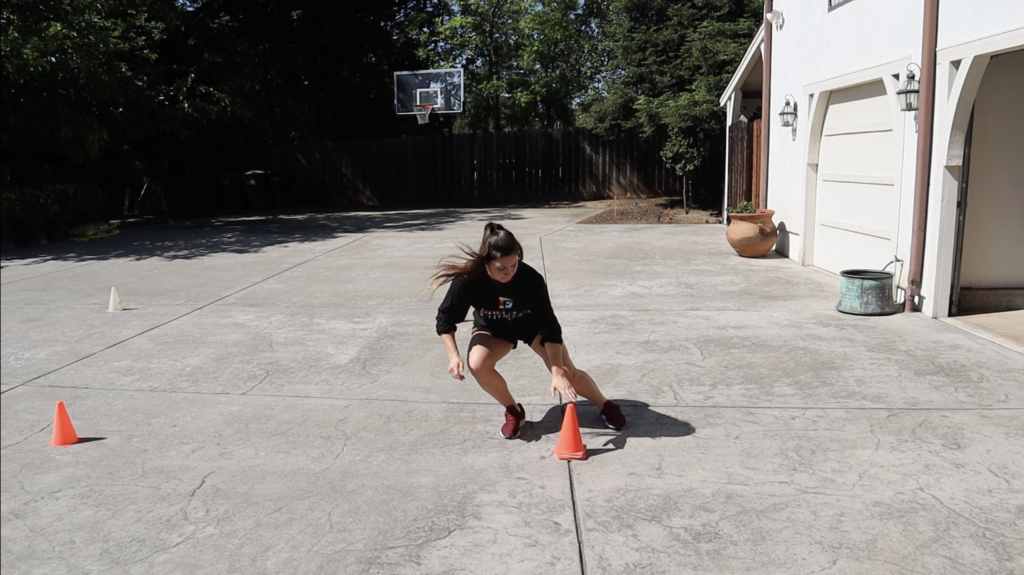
There’s a lot of different components that go into training like an athlete. It’s just the right mix of strength training, power training, speed training, mobility, rest, agility, change of direction, plyometrics, etc, etc. Maybe jumping straight into all of that is a little overwhelming, so just start topic by topic. And plus, that’s why PowerLux Fitness exists. I, Madison Kimball, want to give every day people the exact same training that professional athletes have. Yes it’s true, if you want to look like an athlete, you got to train like an athlete. But I take it a step further. If you want to perform at your best level, forget looking like an athlete, if you want to be an athlete, because everyone is an athlete, you got to train like an athlete. Now, some of the above training focuses, such as power and speed, should be programmed by a qualified coach like we have here at PowerLux Fitness due to their complexity and easiness to screw up, however, not everything is like that.
Change of direction training is something that anyone can work on as long as they know what they are doing. And I don’t mean as long as you have a coaching certification. I mean if you watch a YouTube video and listen to the coach, you can perform the exercises yourself. Now for simple CoD training, this works perfectly well. This is how I trained myself for years while playing Division 1 college soccer. However, now that I am a coach, I understand there’s so much more to CoD training than just going through basic drills. So that being said, I think it’s very important to speak with a coach in addition to running yourself through this training. There are key components that I was missing out while training myself for college that I wish I knew. But the beautiful thing is that now the training I program for myself and clients is able to get both perspectives; that of a strength coach who knows the ins and outs of CoD training, but also the perspective of being an athlete knowing what actually transfers. Anywhoo, I digress. Now let’s get into the real reason why I’m writing this article: How to train for change of direction, and why you should be doing it!
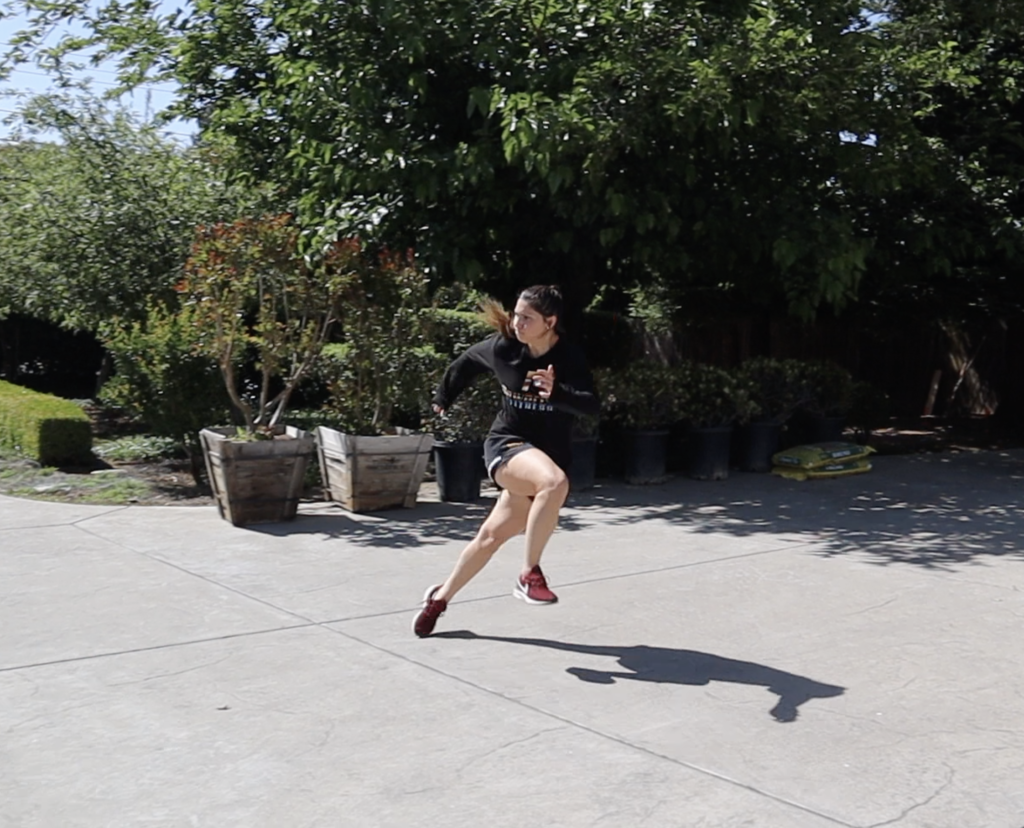
Alright, so I’m going to break it down really simple for all of you. When you are training change of direction (just the basics because it gets complex the more advanced you want to go), there are 3 things to think about: the phases of changing direction, training in addition to change of direction drills, and the best methods of training CoD.
Kicking things off, I’m going to start with the phases of change of direction. It’s imperative to understand the different phases of a movement so that we can train and enhance the same patterns in the gym. The initial phase is deceleration. This is when you slow your body down by absorbing force to prepare yourself to shift direction. The second phase is that actual change of direction, when you go from backpedaling to sprinting, left to right, forward to lateral, whatever the direction may be. This phase is extremely important because you want to change directions fast and efficiently. You don’t want to get stuck in the ground and take 5 minutes to change direction. You want to react quickly, and move those feet. The final phase is of course acceleration. Once you change direction, you need to explode out of the gate, and that comes with acceleration. This is where you work on force production and velocity, so you can generate enough power output to propel yourself in the new direction. It doesn’t matter how quickly you decelerate or how quickly you change direction if your acceleration is -17mph. So those are the 3 phases of changing direction that help map out the training sessions.
Changing direction fast is a skill. It requires lots of repetition and training drills, but we cannot miss 4 other key components that will significantly improve your ability to change direction as well. These 4 other aspects are core strength, how fast you are, strength, and explosiveness. Training just CoD drills without these other components is like only putting meat and potatoes in your soup without herbs and spices. The herbs and spices enhance the flavor, bringing out the best qualities in the other ingredients. The same goes with CoD training and these 4 components. These other aspects are the herbs and spices. They enhance your CoD performance and ability, so we cannot skip over them. Even if you like bland soup without spices, you’re still going to want to train these 4 other things; that’s how important they are.
Let’s start with core strength. This might be the most imperative of the 4. Having a strong and tight core allows you to maintain your balance and stability when you’re going through each phase of change of direction. Deceleration, changing direction, and acceleration all require balance and stability in order to efficiently perform the step. But, the most important part of having a strong core is the fact that it is what transfers energy from your lower half to upper half. You need to have a strong core for your body to work as 1 unit. You want your upper half to go where your lower half goes and vice versa. Without a strong core, when you plant to the left before cutting right for example, your lower body will want to go right but your upper half will still have momentum going left. Therefore, having a strong core will allow your body to move as 1 unit – lower half and upper half together. Two of my favorite ways to train core strength for CoD is integrated training and anti-rotation. Integrated training involves working the core while working other parts of your body. An example is the offset reverse lunge. With this lunge, you’re holding a dumbbell in the same hand as the leg that lunges backwards, causing the dumbbell to try and pull you off balance to the side. You need to engage your core and stay strong to maintain balance while performing your lunge. The second way to train is anti-rotation. If we look at most sports, they usually involve some sort of anti-rotational movement. We want to stay tight through the core while moving our limbs. When a wide receiver jumps to catch a football, he doesn’t completely rotate his body; he stays tight in the core and reaches up with his arms to pull the ball in. By rotating, he’d throw himself off axis, become unstable, and way less efficient. So to train anti-rotation, perform exercises where you have to prevent yourself from turning, such as this Resistance Band Leaning Press Out. Don’t let the band pull you back in or rotate you. Stay strong and work that anti-rotation.
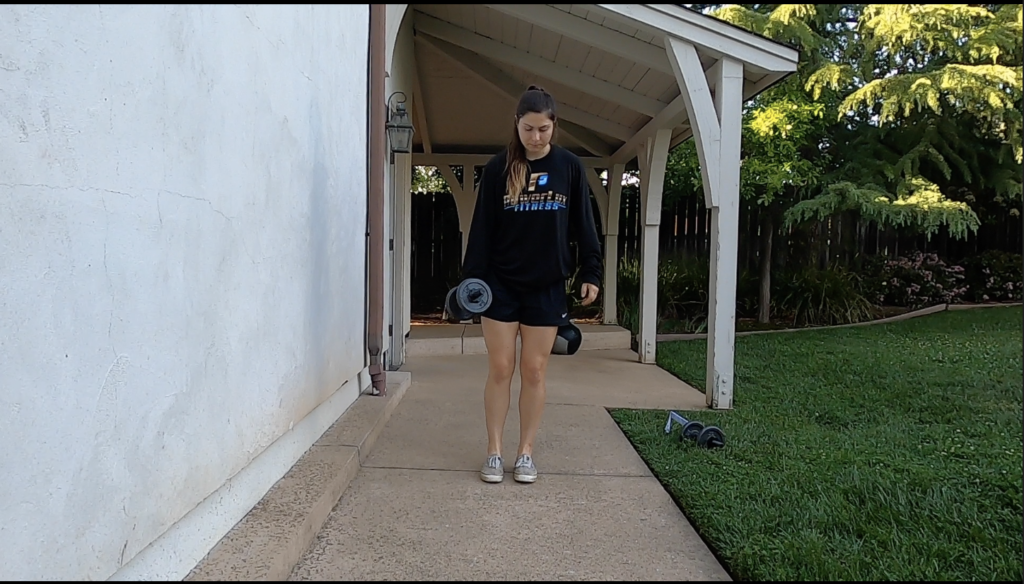
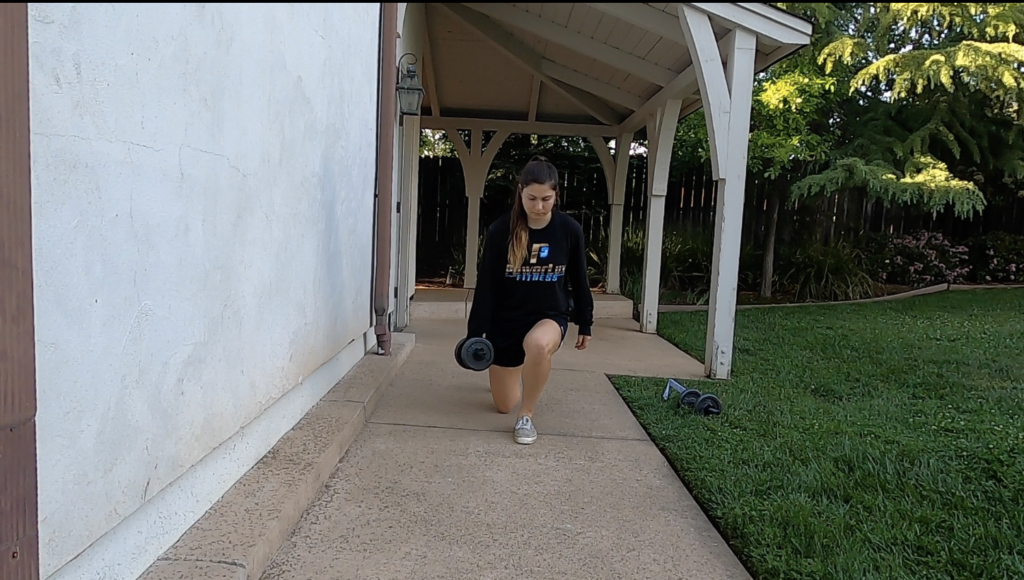
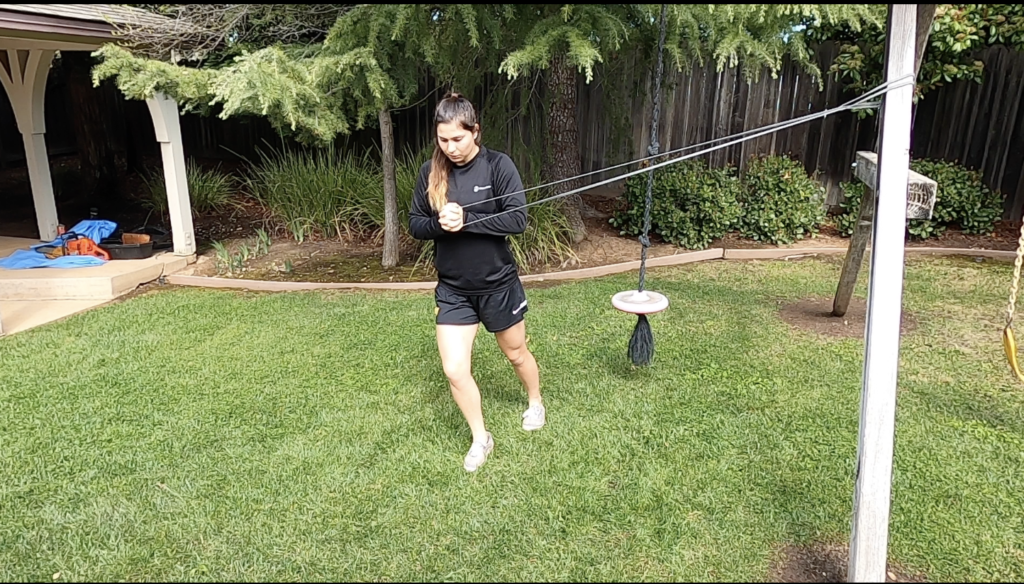

The second component is how fast you are. Generally speaking, the faster you are, the better at change of direction you’ll be. However, this depends on each athlete. Usually though, faster athletes have an increased knee flexion and hip abduction angle during the plant phase (this is great for lateral propulsion for a sharper CoD), resulting in a lower body center of mass, and thus, a more stable body position. Additionally, it will also allow for more efficient force production after you change direction when you’re trying to accelerate out. The greater the exit velocity, the better. Training for this is similar to training for speed. So without all the complexity and nuisances that you’ll leave to a strength coach, just focus on horizontal load training. For example, jumps and med ball power exercises (click here or on the image below for my YouTube video on the best 16 med ball exercises for power to help with your training.)
The third key is strength. The stronger you are, the greater horizontal and vertical eccentric forces you can produce. Basically what that means is that you’ll be able to decelerate much faster and more efficiently the stronger you are. Being able to decelerate quickly is a huge quality to have. Just think about it; the faster you can slow down, the sooner you’ll be able to change direction and explode out of there. The greater the eccentric force production, the less the braking time and ground contact time, and the more storage of elastic energy you’ll have. Storage of elastic energy is similar to the stretch shortening cycle with plyometrics. Your body acts like a rubber band when performing certain exercises, in that it’s able to stretch your muscles and then propel forward. The deceleration phase is an eccentric motion, so our muscles lengthen. The faster we can lengthen and load our muscles, the faster we can explode out, just like a rubber band when you stretch it and shoot it forward. This storage of elastic energy is dependent upon strength capacity, so we have to make sure this is part of our training.
Fourth and finally, we come to explosiveness. Now this has to do with acceleration. The more explosive you are, the better at acceleration you are to a certain degree. This doesn’t carry over to how fast you are; that’s top speed. What I’m talking about here is just how quickly you can explode out of the change of direction phase. If we break down explosive training, a lot of it is centered around extension, specifically triple extension through the ankle, knee, and hip. That’s why doing a power or hang clean is great for explosiveness because it works on that triple extension. Linear acceleration relies on power production generated from the leg extensors, meaning that the better we can extend our body, the better we can be at acceleration. Greater explosiveness leads to a higher change of direction exit velocity, and thus change of direction itself. As I mentioned earlier, to train for explosiveness, start by working on exercises involving a triple extension. Performing a hang clean or some complex movement as such might be better done with a coach who can properly teach technique and execution. However, there are a great number of triple extension movements other than a clean that you can do (high pull, med ball power exercises, etc.)
Well, we’re coming to the end of this article, but before we go, let me tell you quickly about how I train clients for change of direction. I use 2 methods: plyometrics and running drills. Plyometrics are great for reaction and explosion, minimizing time on the ground, joint stability and strength, the stretch shortening cycle for elastic energy, and body control. I have my clients perform a lot of jumping, bounding, and hopping for plyometrics. Secondly, you have to incorporate some running drills. These drills basically take the results from plyometrics and apply them to game movement. They’re great for working on lateral change of direction, forward/backward change, and especially going from shuffling to sprinting or backpedaling. Once again to go back to the soup analogy, training plyos without running drills would be like having your soup but not having a bowl to put it in. Plyos are imperative, I always say plyos are the foundation of power, hell they’re the motherf*ckin soup, but if you can’t apply them or transfer them (aka have no bowl for your soup), then you’re going hungry tonight.
Make sure to check out my Change of Direction YouTube Video for 26 plyometric and running drills that you can do on your own to improve CoD explosiveness and speed! Don’t forget to catch PowerLux Fitness on instagram (@powerlux_fitness) and YouTube (search Madison Kimball) for more workouts and training knowledge! If you’re interested in working with PowerLux Fitness, if you want programming, training, or a consultant, don’t hesitate to reach out! We have top of the line trainers with experience training professional athletes ready to help you!
Until next time, stay rad ??
